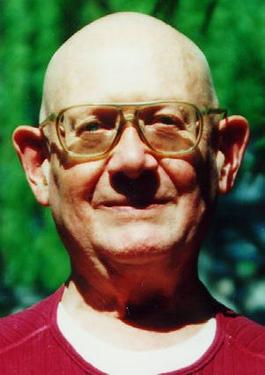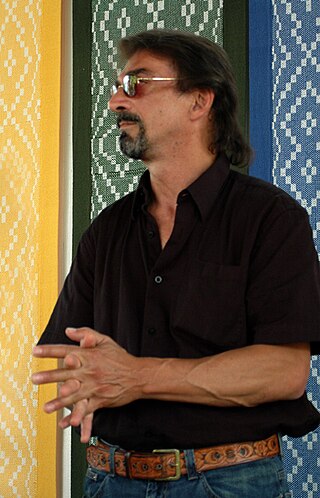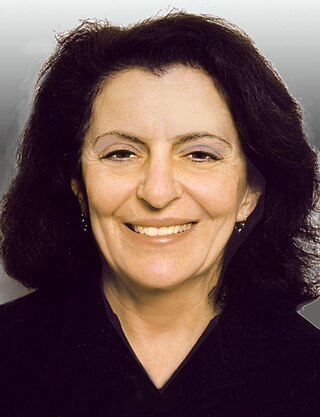
Gary Snyder is an American poet, essayist, lecturer, and environmental activist. His early poetry has been associated with the Beat Generation and the San Francisco Renaissance and he has been described as the "poet laureate of Deep Ecology". Snyder is a winner of a Pulitzer Prize for Poetry and the American Book Award. His work, in his various roles, reflects an immersion in both Buddhist spirituality and nature. He has translated literature into English from ancient Chinese and modern Japanese. For many years, Snyder was an academic at the University of California, Davis, and for a time served as a member of the California Arts Council.

Jean-Louis Lebris de Kérouac, known as Jack Kerouac, was an American novelist and poet who, alongside William S. Burroughs and Allen Ginsberg, was a pioneer of the Beat Generation.

The Beat Generation was a literary subculture movement started by a group of authors whose work explored and influenced American culture and politics in the post-World War II era. The bulk of their work was published and popularized by Silent Generationers in the 1950s, better known as Beatniks. The central elements of Beat culture are the rejection of standard narrative values, making a spiritual quest, the exploration of American and Eastern religions, the rejection of economic materialism, explicit portrayals of the human condition, experimentation with psychedelic drugs, and sexual liberation and exploration.

"Howl", also known as "Howl for Carl Solomon", is a poem written by Allen Ginsberg in 1954–1955 and published in his 1956 collection Howl and Other Poems. The poem is dedicated to Carl Solomon.

The term San Francisco Renaissance is used as a global designation for a range of poetic activity centered on San Francisco, which brought it to prominence as a hub of the American poetry avant-garde in the 1950s. However, others felt this renaissance was a broader phenomenon and should be seen as also encompassing the visual and performing arts, philosophy, cross-cultural interests, and new social sensibilities.

Philip Glenn Whalen was an American poet, Zen Buddhist, and a key figure in the San Francisco Renaissance and close to the Beat generation.

The Dharma Bums is a 1958 novel by Beat Generation author Jack Kerouac. The basis for the novel's semi-fictional accounts are events occurring years after the events of On the Road. The main characters are the narrator Ray Smith, based on Kerouac, and Japhy Ryder, based on the poet and essayist Gary Snyder, who was instrumental in Kerouac's introduction to Buddhism in the mid-1950s.

Blues and Haikus is the American novelist and poet Jack Kerouac's second album and was released in 1959.

Mexico City Blues is a long poem by Jack Kerouac, composed of 242 "choruses" or stanzas, which was first published in 1959. Written between 1954 and 1957, the poem is the product of Kerouac's spontaneous prose technique, his Buddhist faith, emotional states, and disappointment with his own creativity—including his failure to publish a novel between 1950's The Town and the City and the more widely acclaimed On the Road (1957).

Lonesome Traveler is a non-fiction collection of short essays and sketches by American novelist and poet Jack Kerouac, published in 1960. It is a compilation of Kerouac's journal entries about traveling the United States, Mexico, Morocco, the United Kingdom and France, and covers similar issues to his novels, such as relationships, various jobs, and the nature of his life on the road. Some of the stories originally appeared as magazine articles.

Reality Sandwiches is a book of poetry by Allen Ginsberg published by City Lights Publishers in 1963. The title comes from one of the included poems, "On Burroughs' Work": "A naked lunch is natural to us,/we eat reality sandwiches." The book is dedicated to friend and fellow Beat poet Gregory Corso. Despite Ginsberg's feeling that this collection was not his most significant, the poems still represent Ginsberg at a peak period of his craft.

Scattered Poems is a collection of spontaneous poetry by Jack Kerouac. These poems were gathered from underground and ephemeral publications, as well as from notebooks kept by the author. Some poems include: "San Francisco Blues," the variant texts of "Pull My Daisy," and American Haiku.
Jack Kerouac was an American novelist and poet. He is considered a literary iconoclast and, alongside William S. Burroughs and Allen Ginsberg, a pioneer of the Beat Generation. Kerouac is recognized for his method of spontaneous prose. Thematically, his work covers topics such as Catholic spirituality, jazz, promiscuity, Buddhism, drugs, poverty, and travel. Kerouac used the name "Duluoz Legend" to refer to his collected autobiographical works.
Kenneth Yasuda was a Japanese-American scholar and translator.

Readings by Jack Kerouac on the Beat Generation is the third and final spoken word album by the American novelist and poet Jack Kerouac, released in January 1960 on Verve Records. The album was recorded during 1959, prior to the publication of Kerouac's sixth novel, Doctor Sax.

Alan Pizzarelli is an American poet, songwriter, and musician. He was born of an Italian-American family in Newark, New Jersey, and raised in the first ward’s Little Italy. He is a major figure in English-language haiku and Senryū.

Regina Weinreich is a writer, journalist, teacher, and scholar of the artists of the Beat Generation.
Albert Fairchild Saijo was a Japanese-American poet associated with the Beat Generation. He and his family were imprisoned as part of the United States government's internment of Japanese Americans during World War II, during which time he wrote editorials on his experiences of internment for his high school newspaper. Saijo went on to serve in the U.S. Army and study at the University of Southern California. Later he became associated with Beat Generation figures including Jack Kerouac, with whom he wrote, traveled and became friends.
The Japanese haiku has been adopted in various languages other than Japanese.














